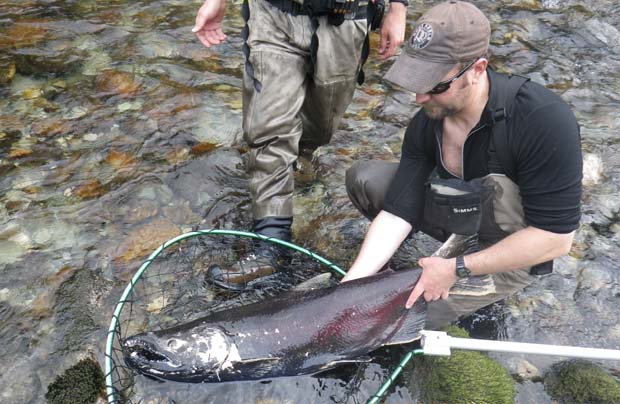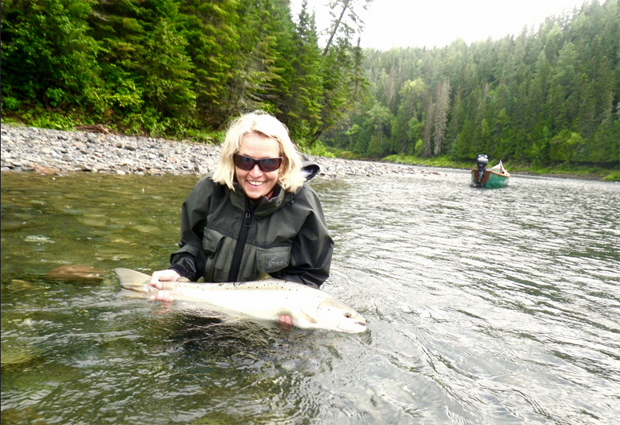There are several species of salmon and several ways they arrive at your fish market, local restaurant, big box store or chain grocery store. They are Wild Alaskan Salmon (five species of Alaskan salmon: Pink or Humpy Salmon, Dog or Chum Salmon (Keta), King or Chinook Salmon, Red or Sockeye Salmon, Silver or Coho Salmon, Wild Atlantic Salmon, Hatchery Salmon (all varieties), Farmed Atlantic Salmon, Canned Atlantic Salmon and Canned Alaskan Salmon (varieties).
The Conscientious Carnivore – Wild Alaskan Salmon
By Matthew Kadey, MS, RD. A Canadian based dietitian and food and nutrition writer.
[dropcap]O[/dropcap]nly a few fish are as rich and healthy for you as salmon. It’s a stellar source of protein, vitamin B12, selenium, the omega-3 dynamic duo of EPA and DHA, and astaxanthin, the potent antioxidant that gives salmon its pink hue. But to net the most benefits, you’ll want to choose carefully: Like beef, chicken, and eggs, not all salmon is created equal.
Why it’s a great choice: Grill up a palm-size portion of wild sockeye and you’ll get more than twice the recommended minimum intake of omega-3 fats. By fattening up on krill and tiny crustaceans — instead of the vegetable oils and grains used in many farm operations — wild salmon have an ideal omega-3 to omega-6 ratio.

Chinook Salmon from the Keta River in 2012. About 80-90% of salmon caught in the Pacific Northwest and 40% of the salmon caught in Alaska are from hatcheries. These stock enhancement activities that contribute over 270 million dollars to the commercial fishery alone and millions more to the recreational fishing industry and local tourism. (Credit: Andrew Gray, AFSC) NOAA image.
Farmed salmon (often labeled “Atlantic”) is criticized for high levels of contaminants, the overuse of antibiotics, pollution of surrounding waterways, and nonsecure marine pens. Serving up more controversy is the recent FDA ruling that allows the sale of farmed GMO salmon
What to look for: For a fillet or steak, free-living species hailing from Alaska — Chinook (or king), chum, coho, pink, and sockeye — are considered the gold standard, delivering on nutrition, sustainability, and animal welfare. (Check out www.seafoodwatch.org for ocean-friendly choices.)
Canned salmon (look for the word “wild” on the label) can actually have a nutritional advantage over fresh if you select a brand that includes the soft, chewable bones, which provide a shot of bone-building calcium. Canned sockeye delivers about 64 percent more vitamin D and 38 percent extra omega-3s than canned pink salmon. Brands like Crown Prince and Wild Planet come in BPA-free tins.
Make it more affordable: Frozen is less expensive than fresh — and flash-freezing on boats soon after the fish have been hauled onboard results in little loss in flavor . . .
. . . says Ryan Bigelow, outreach program manager for the Monterey Bay Aquarium Seafood Watch program. “Canned salmon also lets producers use more parts of the fish and get more of their product to the market,” he adds. So selecting canned salmon is one way to take a bite out of food waste.
NOTE: Featured Image is of Camp Bonaventure, Canada. A nice Atlantic salmon on a fly. Image credit www.sportquestholidays.com







